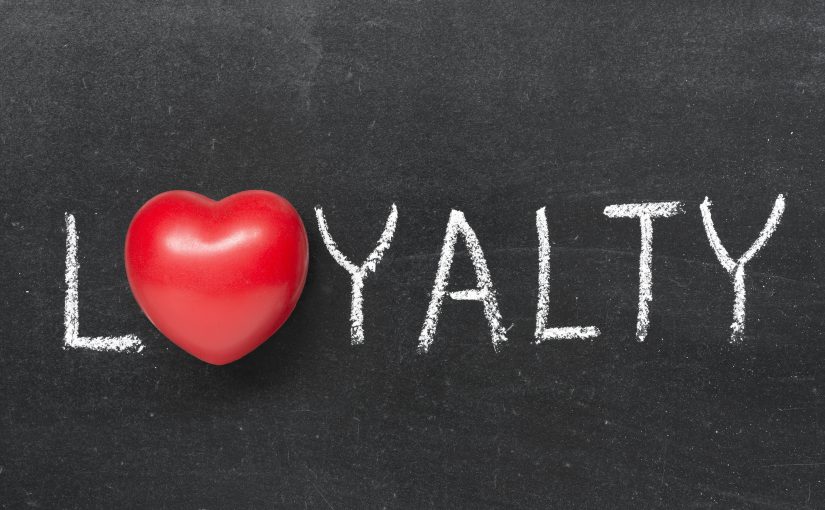A frequently heard lament from Principals is:
I’m drowning in routine maintenance and don’t have the time to focus on higher value treatments. In any event, there is no way that the patients will agree to see another dentist – they have been seeing me for years and will kick up a fuss if I tell them that they are being transferred to another clinician.
We have addressed this problem before, making reference to the metaphoric “three-story dental practice”.
Back in 2014 I published a 7connections infographic on this subject that you can download here:
7C Triaging & Profitability – Jan 2014
I’d like to expand the conversation to consider patient loyalty to a dentist in these ever more competitive times. In this context, I place the dentist in the role of brand ambassador.
It is a mistake to assume that people are loyal to brand – I would argue that we are all, by nature, fickle – capable of being seduced away.
Seth Godin covered this ground in his book “Tribes” when he reminded us that branding is a modern-day equivalent of tribal membership and is motivated by Maslow’s hierarchy of needs, particularly, the desire for security and belonging.
The Tribe keeps us safe from predators and aggressors.
So the most powerful brands in the world create an environment in which we feel “SAFE” when we associate ourselves with their Tribe.
I feel SAFE in my Converse, my Levi jeans, carrying my North Face rucksack, wearing my Omega (or Garmin) watch, my Asics running shoes and using my iPhone and MacBook.
Many of us feel SAFE with our choice of post code, motor vehicle or occupation.
As the world becomes more complex we seek safety.
It was Seth who famously pointed out that the legacy of Steve Jobs was not in creating computers, MP3 players and telephones. His genius was in teaching us to have taste when we bought them.
Apple is about design first and function second – but us Mac-heads feel “cool” (i.e. SAFE) when we use them in (especially in public) – we belong to the right Tribe.
So branding isn’t about creating a product or service offering that beats the competition.
Branding is about creating a SAFE place, product or service for people to protect themselves with.
Think about the origins of Starbucks as a franchise, creating the “third place” – a coffee shop in which to relax, as opposed to the first place (home) and the second place (the office). Formerly, the only other choice was a gas station. Starbucks innovated a new SAFE place and we flocked towards it, spawning the West Coast Coffee Culture that now dominates our high streets, airports and stations.
So when a patient baulks at the idea that they will be seeing a new dentist, the existing dentist (and team) interpret this as a sense of loyalty to the existing dentist.
Whilst the personal relationship with “old Dr. Smith” is genuine, I would argue that the patient is motivated to object by FEAR.
It’s not about losing Dr. Smith, charming though he is – it’s about “who will the next person be – and will I be SAFE?”
Many practices and Principals avoid the transfer of patients indefinitely because of this phenomenon – and because they never develop the language to deal with it.
Consider then those who succeed in regularly recruiting apprentice dentists, promoting them into associate positions and gradually introducing them to existing patients – thus releasing time in their own schedule for longer appointments and more complex (and profitable) treatments.
The answer lies in reframing the question:
“How do I create an environment in which my patients feel SAFE with their new clinician?”
- Personal introduction – when the existing clinician takes the time to meet the patient with the new clinician to formalise the new relationship
- Language – choose your words carefully. Avoid “transfer”, “will no longer be treating you” (back to the three-story model)
- Training – make sure all of your team, especially at the front desk, are well rehearsed in the language
- Evidence – have the new clinician’s verbal clinical CV in mind so that you can demonstrate their experience – but please remember that this will not be as important in the patient’s mind as the personality and attitude of the newcomer
- The Blessing – take the time to state very clearly that the new clinician has been approved by you
- Continuity – tell the patient that the new clinician will be delivering a standard of customer service and clinical care that is consistent with the brand standards that you have maintained over the years
- Rapport – create an environment in which the new dentist can create a personal relationship with the patient before they look inside their mouth
This all sounds as if it will take time – it will – but the investment of time that you make now will pay you back a thousand-fold.
Transfers of patients take place all the time in the practices I work with and succeed because the teams involved understand the psychology of what is happening.
They seek first to understand, then to be understood.

